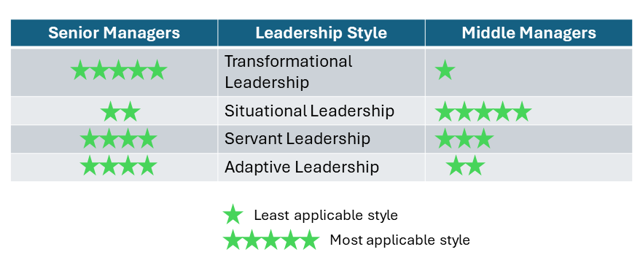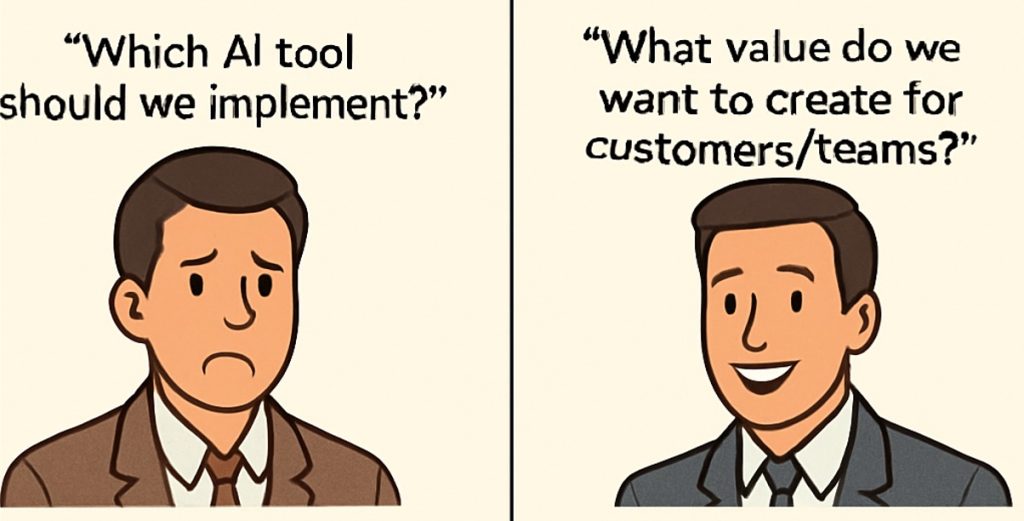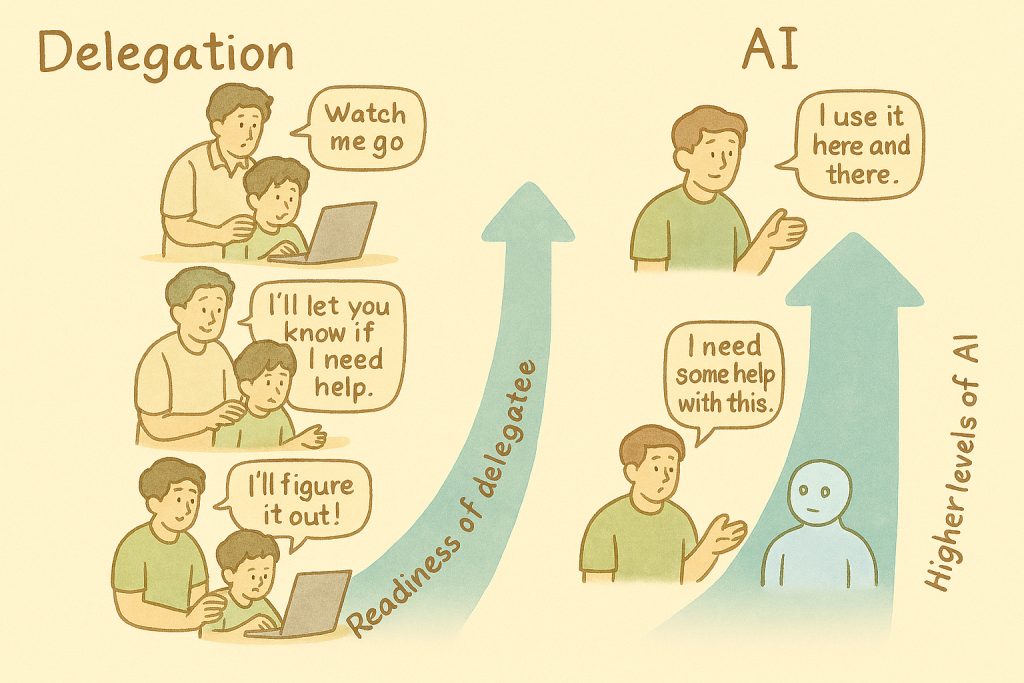As you can make out from the title, I am targeting two objectives for this blog:
- share my thoughts on leadership styles in general and its nuances in the context of middle managers vis-a-vis senior managers (with an intuitive common understanding of “middle” and “senior”)
- explore the efficacy of ChatGPT in blog development – i.e. use ChatGPT as a sort of research assistant
Leadership styles depend on context, role and typical followers, do they not? So, let’s look at a comparison of senior managers and middle managers along those dimensions.
| Senior managers | Middle managers |
| Context: Broader market, competitor and company growth perspective | Context: Specific contexts of current customers and prospects |
| Context: Managing in a VUCA world | Context: Managing product engineering / highly dynamic project environments |
| Role: Managing operationally autonomous units aligned with company vision and strategies; meeting financial goals | Role: Managing portfolios and projects from a delivery point of view, developing teams and mentoring individuals to achieve target goals |
| Role: Organizational growth, goal setting, product/offering development and sustenance | Role: Balancing market/customer/internal requirements/team aspirations while meeting customer engagement goals |
| Role: Interacting more with external stakeholders such as customers & partners and internal support functions such as HR, Finance and Legal | Role: Interacting with a higher number of customer stakeholders and a number of internal stakeholders and collaborating for mutual success |
| Followers: Managers – typically mature people with domain and managerial track record | Followers: A more diverse set of people with varying skills, experiences and motivation levels |
| … | … |
| … | … |
The above comparisons may not be exhaustive but not atypical, I would think.
Armed with the above, let’s dive into some generally-accepted leadership styles and see what applies to middle managers and to what extent. ChatGPT came up with quite a number of prevalent leadership frameworks! I picked just a few to illustrate the point.
- Transformational Leadership: Focuses on vision, inspiration and change. Leaders work to change the status quo and engage followers in the journey.
My take on this is that this style is needed for senior managers much more than middle managers while granting that middle managers are often the key change agents in organizational transformation initiatives. They could actively help or passively resist!
- Situational Leadership: This framework states that effective leadership depends on the context and the maturity of followers. It comprises sub-styles such as
- Directing (high directive, low supportive)
- Coaching (high directive, high supportive)
- Supporting (low directive, high supportive)
- Delegating (low directive, low supportive)
I think the need for situational leadership for middle managers is really crucial given the high volatility in their execution responsibilities and the complexity of internal challenges which could sometimes be greater than product/service/customer related challenges. Situational leadership is indeed a vital tool in the survival kit for middle managers; less so for senior managers given the greater maturity of their teams in general.
- Servant Leadership: There has been much traction for servant leadership especially in agile software development. This style stresses the manager’s role as a servant first, giving priority to the needs of employees and helping them grow & perform at their best. This style is most suitable in environments where collaboration, people empowerment and ethical behavior are highly valued.
In my experience, while there is lot of “talk” about it, there is not much evidence of it in the “walk”! If at all, it is practiced to an extent by managers of agile teams but I cannot honestly say that in general for middle management. However, as a cultural aspect of the organization, I believe it has significant relevance and importance; senior managers would do well to adopt and lead by example.
- Adaptive Leadership: On the face of it, it seems similar to the situational leadership style. Both stress flexibility and responsiveness to changing circumstances. Situational leadership is largely based on team maturity and skill as a dominant dimension and suggests a variety of sub-styles (directing, coaching, supporting and delegating). In contrast, adaptive leadership focuses on complex systemic issues for which technical expertise alone is inadequate. Plenty of experimentation of possible ways to progress, failing fast and facilitating change in people’s behavior distinguish adaptive leadership.
Given the above, my sense is that it is more in the domain of senior managers at an organizational level and not so much for middle managers.
Ok, you have the summary of the above in the diagram below.

In conclusion, I believe leadership styles are always a blend for middle as well as senior managers based on context, the blend being quite different for middle managers compared to senior managers. For middle managers, the pace of blending & adopting can be almost on a daily basis – a constant juggling of stakeholder interests without dropping any ball!
Hopefully, this blog will help middle managers to be better aware of the need for dynamic blended leadership styles and adopt them; also, for senior managers to coach and support their middle managers more effectively.
On using ChatGPT, yes, it has indeed helped quite a bit with specific questions that I had. That said, the blog theme of some leadership styles being more applicable to middle managers is solely my own! On a lighter note, quillbot (quillbot.com) analyzed this blog and said that there is 0% AI generated content!!
Look forward to your comments, especially if you are a middle manager.





